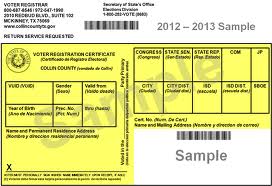Rick Hasen lays it out.
Don’t worry, Chief Justice John Roberts assured the American public in that 2013 case, Shelby County v. Holder. Although states with a history of racial discrimination would no longer be subject to federal “preclearance” of voting changes because preclearance offends the “equal sovereignty” of states such as Texas, there’s always Section 2 of the Voting Rights Act. That provision, Roberts explained, is available “in appropriate cases to block voting laws from going into effect. … Section 2 is permanent, applies nationwide, and is not at issue in this case.”
So the federal government and civil rights plaintiffs have used Section 2 as their best remaining protection. They used it to go after Texas for enacting one of the strictest voter ID laws in the nation and North Carolina for passing an omnibus voting rights rollback. Somewhat surprisingly, a panel of the conservative U.S. Court of Appeals for the 5th Circuit recently agreed that Texas’ decision to enact a strict voter ID law, without proof that the law is necessary to prevent voter fraud or promote public confidence, violated Section 2.
But now Texas has upped the ante, arguing that if Section 2 indeed makes its voter ID law illegal, then Section 2 violates the Constitution. That means the other great statutory protection of minority voting rights would suffer the same fate as the preclearance provision and leave minority voters with few protections from unwarranted new voting hurdles.
[…]
Now Texas has filed a petition asking the entire 5th Circuit (sitting “en banc”) to review the law, and you should expect Texas to go to the Supreme Court if it loses again. Aside from arguing that Section 2 does not bar its voter ID law, the state argues that Section 2 would be unconstitutional if it actually made Texas’ voter ID law illegal. First, piggybacking off the Shelby County decision, Texas argues, such a reading of Section 2 would exceed Congress’ power to enforce the Constitution’s prohibition on race discrimination in voting under the 15th Amendment. Second, Texas argues that if Section 2 is violated simply by showing an election law has a “disparate impact” on racial minorities, then this would elevate racial considerations over a state’s legitimate policy objectives, like stopping voter fraud.
Let’s not mistake what Texas is doing here. To seem more moderate, it couches its constitutional arguments in the language of “constitutional avoidance,” not exactly saying that Section 2 is unconstitutional but saying that the courts should read it narrowly because otherwise the law would be unconstitutional. In practical terms, that’s a distinction without a difference. In either case, according to Texas, the result is that Section 2 cannot offer protection for racial minorities in vote denial cases.
See here, here, and here for the background. Just because the state of Texas has asked for the Voting Rights Act to be further disemboweled doesn’t mean it is going to happen, though it does mean we’re relying on the Fifth Circuit and the Roberts Supreme Court to not make it happen. I suppose there could be a favorable vacancy on the Court before it gets this inevitable appeal, and there’s always the chance Congress could fix the problems that SCOTUS had with Section 5, but…yeah. You know what I mean. Hope for the best, and make sure a Democrat wins the White House in 2016.


Pingback: Eye on Williamson » TPA Blog Round Up (September 14, 2015)
Pingback: Texas blog roundup for the week of September 14 – Off the Kuff